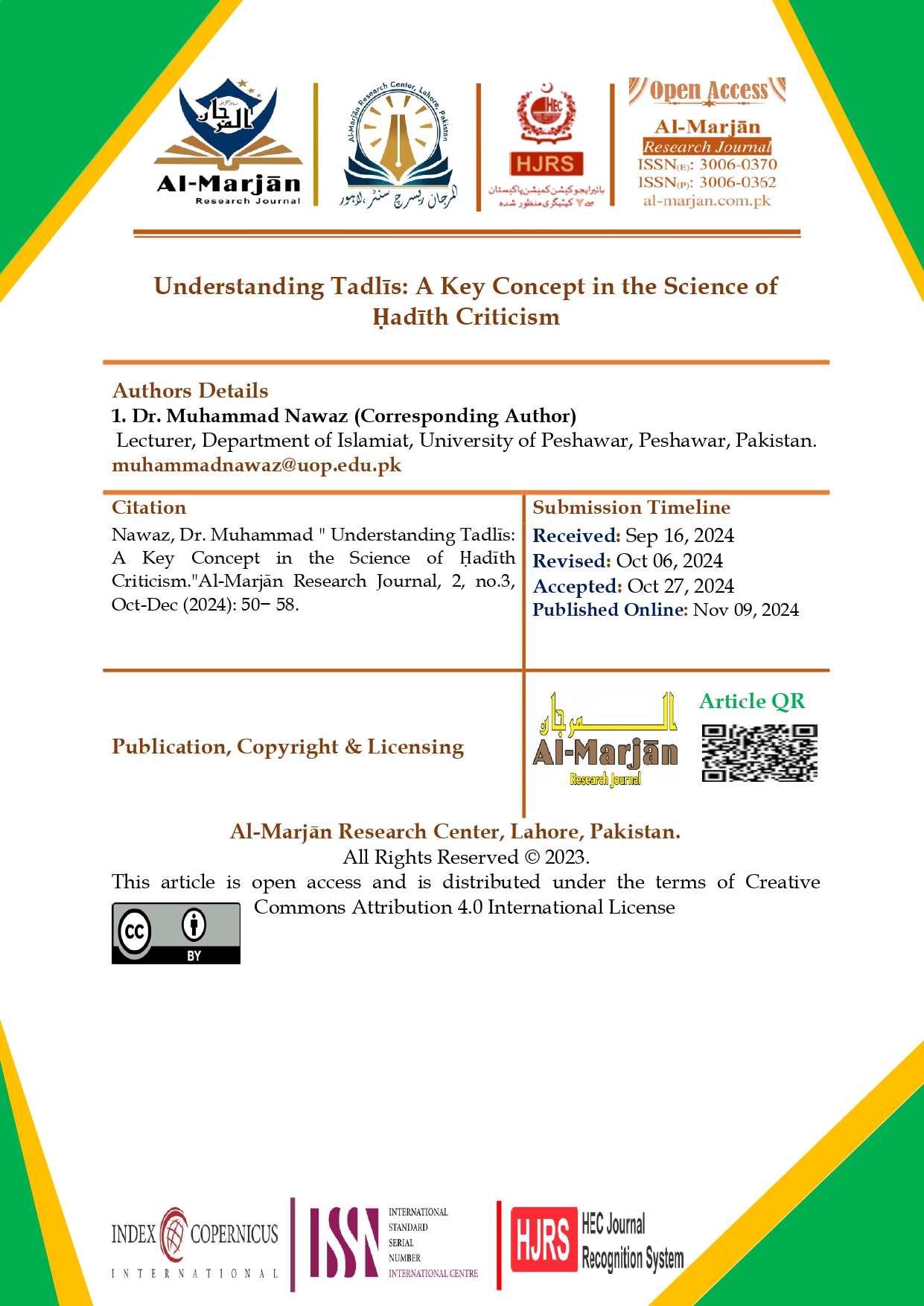Understanding Tadlīs: A Key Concept in the Science of Ḥadīth Criticism
DOI:
https://doi.org/10.1234/6mvsqw31Keywords:
Tadlīs, Irṣāl Khafī, Mudallis, Isnād, ʿIlm al-Jarḥ wa al-TaʿdīlAbstract
Tadlīs, a nuanced and critical concept within the discipline of ʿIlm al-Jarḥ wa al-Taʿdīl (the science of narrator criticism), refers to specific techniques of concealment or omission within the transmission of ḥadīth. This paper explores the theoretical and practical dimensions of tadlīs, tracing its definitions and classifications from early Islamic scholarship to later systematic elaborations. Classical scholars identified several forms of tadlīs, most notably Tadlīs al-Isnād—the concealment of a weak or missing link in the chain of narrators—and its close variant, Tadlīs al-Shuyūkh, which involves disguising the identity of a teacher. This study also clarifies the conceptual overlap and distinction between tadlīs and irsāl khafī (hidden discontinuity), a related phenomenon that further complicates isnād analysis. Using examples from major ḥadīth collections and biographical dictionaries, the article examines how early critics like al-Shāfiʿī, Ibn Ḥanbal, and Ibn al-Madīnī evaluated narrators who practiced tadlīs and what criteria they applied to determine the impact of tadlīs on ḥadīth authenticity. Emphasis is placed on understanding that not all tadlīs renders a ḥadīth weak, and a nuanced approach—considering corroborating evidence, the narrator’s reliability, and contextual indicators—is essential. The study concludes that a rigid application of rules without regard for interpretive frameworks of early scholars risks oversimplification of a highly technical subject.






































